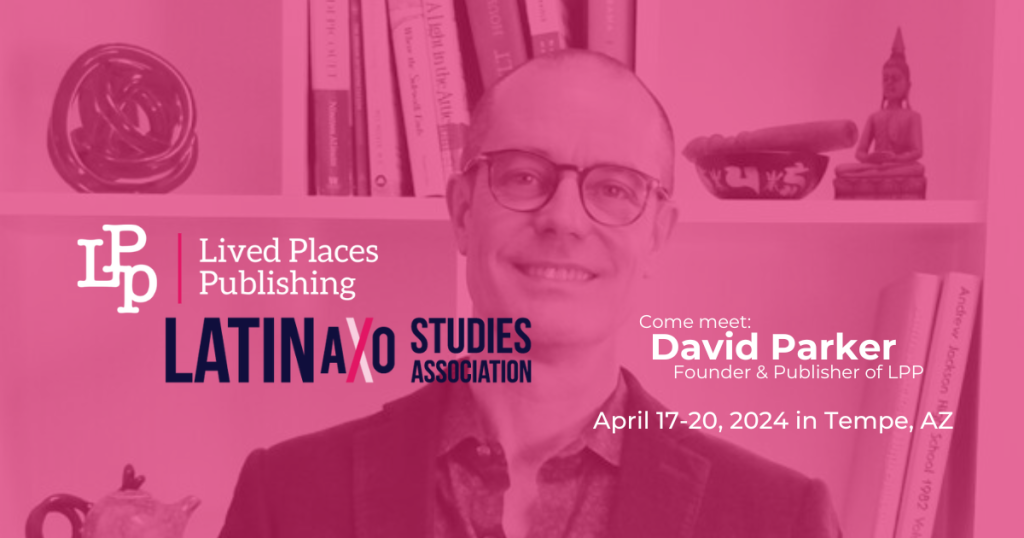By Dr. Manuel Callahan, Collection Editor
Recently we have witnessed often heated discussions about Latinx, a relatively new term circulating that seeks to address the complexity of the many worlds, loosely understood, to reference peoples who have some connection to what many refer to as Latin America. It is the X that has caused the most concern. Detractors are adamant that the X is at best unnecessary, and at worst an abomination of some sort. Those in favor have insisted on its necessity as a matter of inclusion, or for still others committed to the X, life or death. The battle embodied in the X resurfaces critical questions about the connections, and subsequent tensions between identity and place. The battle for the X, and within the X, results from the on-going legacy of conquests, rebellions, diasporas, and encounters along with the cultural practices, performances, memories, and imaginaries engendered through refusals, cooptations, mixing, and autonomy.
Lived Place Publishing (LPP) and the Latinx Studies Collection, in particular, embraces the X – not to make easy claims about identity and place, but to open up a space to explore the productive tensions between place and identity. Place can be physical and national places, or even imagined spaces, such as nepantla, the space in-between those imposed, resisted, and claimed social and institutional ones. Can the X mark the tensions between national identities as well as social, cultural, and political ones? And, how are these linked to longstanding, rooted places and those more recently claimed that have been traversed by waves of arrivals? How has movement been nurtured by rootedness?
The Latinx Studies collection celebrates the places of autonomy, resistance, fugitivity, movement, and encounter within “Latin America.” Certainly, contributions to the collection might focus on the barrio, colonia, favela, quilombo, and ejido, but they might also include resource rich areas within forests, along rivers, and rooted in other sites that have been or are currently the targets of extractivism and deracination. Similarly, authors might want to write about the tension between rural and urban places from the perspective of the “migrant metropolis” or the in-between and trans territorial places of Oaxaca-California, the borderlands. It can be the sought-after place of work and an imagined future. In the case of the US Southwest, we often talk about particular places that are peculiarly raced, such as the Valley (i.e., Rio Grande Valley) or South Texas or the East Side.
Across Latin America and the US there are movements from rural to urban spaces. Practices common to an ejido are exercised in metropolises across the US urban landscape often forming essential parts of the “migrant metropolises” that dot the US These spaces frequently link communities dispersed between, for example, Oaxaca and California, woven together by cultural practices exercised in a small Oaxaqueño community and dispersed across urban zones of Califas, transcending national boundaries, not so much as trans-national spaces, but as trans territorial spaces unencumbered by the pretensions of national projects. Still other communities struggle to find and define a place where they are not excluded from either territorial or trans territorial institutions. The many configurations of place are never homogenous, but are teeming with currents of fugitivity and queerness, creating an additional layer, or complication, of place and identity, of imposition and refusal, mixing and singularity.
Even physical places presumed to be more easily recognizable that also inform the X are places that reverberate with the tensions between physical and social, geographic and institutional. The borderlands can reference the imposed boundaries between countries, as in the case of the US and Mexico. It can also evoke those spaces, imagined, lived, and represented that are produced from and through histories and contexts of violence, inequality, and exploitation. Similarly, rich places, abundant in natural resources, that have been brutally marked out for extraction (for example, rivers, forests, canyons) narrate development and progress, but are also spaces of struggle, places of stewardship by peoples refusing to succumb to industrial production, market discipline, and mechanisms of forgetting.
“Lived places,” for the Latinx Studies Collection, will mean those locations that engage borders, borderlands, fronteras, and spaces of encounter that produce struggle where multiple and divergent identities converge and intersect. The Latinx Studies Collection welcomes titles that explore the various identities and subjectivities that cut across the Americas and the world, and which confront the many colonialities and diasporas that have come to comprise the Latinx and Chicanx experience.
|
To submit a proposal, click here: Call for Authors To see the vision for the Latinx Studies Collection, or get in touch with Dr. Manuel Callahan, click here: Latinx Studies To stay connected with Lived Places Publishing, you can subscribe to our email list, to our channel on Medium, or to our Substack list. |
 |
IMAGE CREDIT: Gerd Altmann, used under the Pixabay License



